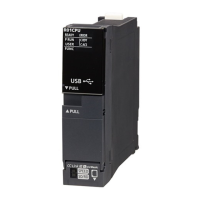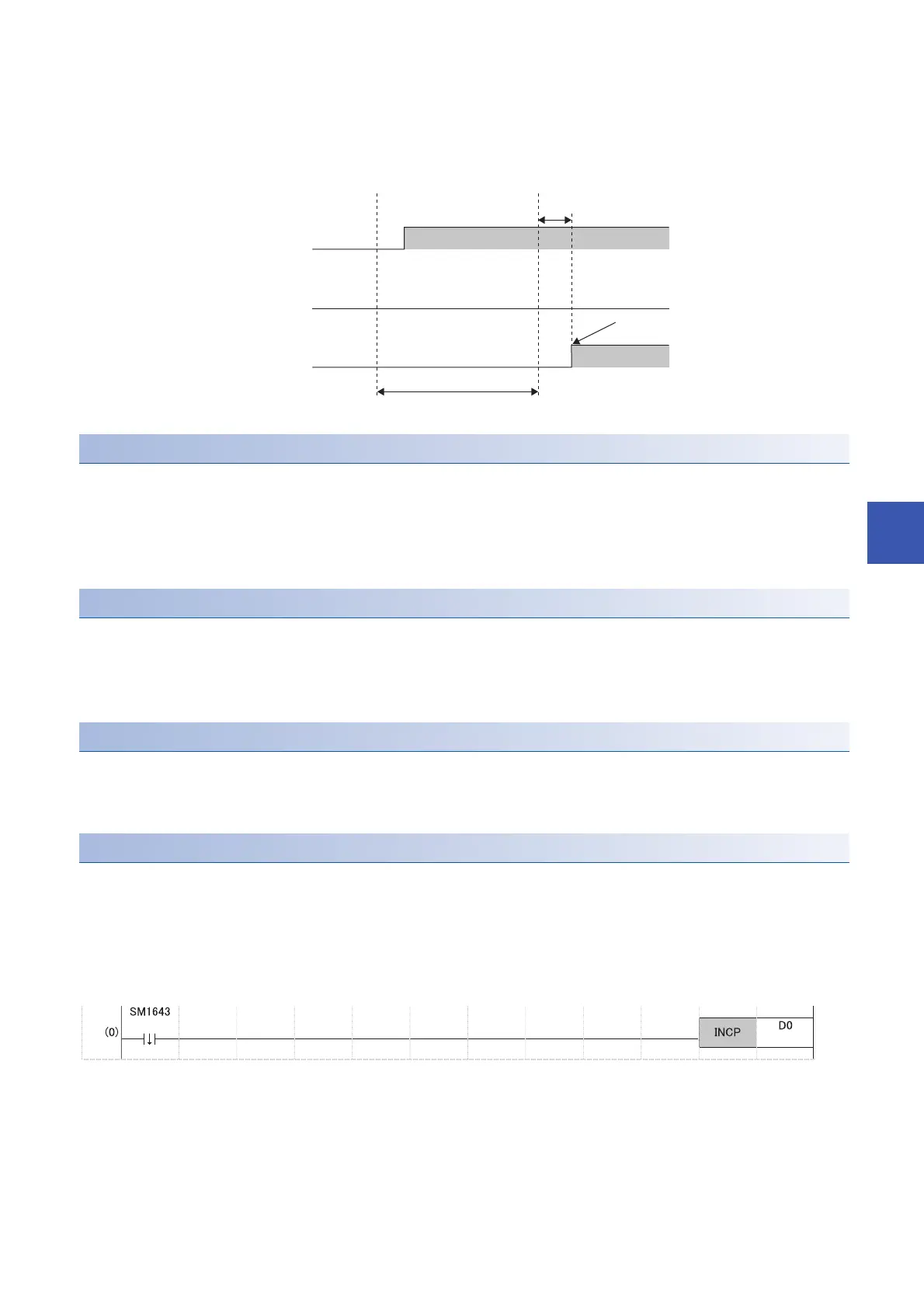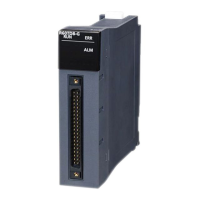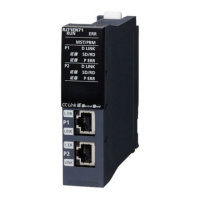39 PRECAUTIONS ON PROGRAMMING
39.1 Instructions Not Available in System Using SIL2 Process CPU
689
39
■When the signal flow memory is tracked
When the system switching is performed, the execution condition of the SCJ instruction turns on while the signal flow memory
remains off. In the new control system, the processing jumps to the pointer specified by the SCJ instruction in the second
scan.
Data processing instructions
If the system switching is performed without the signal flow memory being tracked, the signal flow memory of the new control
system turns on. Thus, the SORTD(_U)/DSORTD(_U) instruction in the first scan after the system switching will be executed
not as the first execution but as continuous execution (continuous processing). When the instruction is executed for the first
time, the instruction is executed without data to be stored in the devices used by the system, causing an unintended
operation.
TIMCHK instruction
If the system switching is performed without the signal flow memory being tracked, the signal flow memory of the new control
system turns on. Thus, the TIMCHK instruction in the first scan after the system switching will be executed not as the first
execution but as continuous execution (continuous processing). At the first execution, the current value is not cleared and the
device that turns on at timeout is not turned off. The instruction is executed with the status at the previous measurement.
XCALL instruction
If the system switching is performed without the signal flow memory being tracked, the signal flow memory of the new control
system turns on. Thus, the subroutine program will not be executed when the execution condition of the XCALL instruction
remains off in the first scan after system switching.
Rising instruction using SM1643 as an execution condition
SM1643 is the special relay that turns on for one scan in the new control system after system switching. If the system
switching is performed without the signal flow memory being tracked, the signal flow memory of the new control system turns
on and a rising instruction cannot be executed. To execute a rising instruction where SM1643 has been set as an execution
condition, use a falling edge pulse operation contact (LDF/AND/ORF instruction) and create a program in which the rising
instruction is to be executed at the falling edge of SM1643, as shown below. However, when the falling edge of SM1643 has
been set as the execution condition, the target instruction will be executed in the second scan after the system switching.
(1) After system switching, the processing jumps in the second and later scans.
(1) The instruction will be executed in the second scan after the system switching.
(1)
ON
OFF
System switching start System switching completion
Systems are being switched.
1 scan
Execution condition of the SCJ
instruction
Jump by using the SCJ instruction
(old control system)
Jump by using the SCJ instruction
(new control system)
Jump
No jump
Jump
No jump

